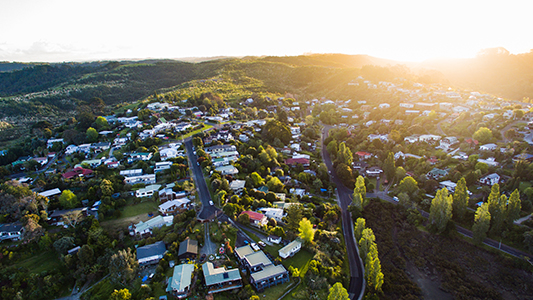INSIGHTS
ARE FURTHER BORROWING RESTRICTIONS ON THE WAY?
Mark Lister, 13 May 2021
The Reserve Bank of New Zealand released its six-monthly Financial Stability Report recently.
It acknowledged that the New Zealand economy had performed much better than feared in recent months, while noting that some businesses were still vulnerable.
It singled out strong export prices as a positive, but noted that supply chain disruptions and border restrictions were significantly affecting some companies.
The Reserve Bank believes the substantial fiscal and monetary policy support we’ve seen over the past year had helped prevent many business failures and a large rise in unemployment.
However, the report was quick to remind readers that our economic prospects will ultimately depend on the global containment of the pandemic, as well as an economic recovery in our major trading partners.
While low interest rates were supporting the recovery, the Reserve Bank noted these were also contributing to higher asset prices. This is true of just about any asset class – not only houses, bonds and shares, but also art, antiques and classic cars.
However, it’s housing that’s in the spotlight because (unlike for other investments) most people use borrowed money to purchase their homes or rental properties.
Using debt in this way is an excellent wealth generation strategy during rising markets, but it works in reverse in a falling market, and things can get very ugly indeed if you overstretch yourself.
If you’ve invested in shares or a managed fund of some sort, and it falls 10 per cent during a downturn, you’re down 10 per cent.
However, if you’ve borrowed 80 per cent of the value of a house to get on the property ladder, and the market falls 10 per cent, you’ve lost half of your equity. For most people, their house is their biggest asset, so that’s a grim scenario.
This is one reason policymakers get nervous about an overheated housing market. The higher prices go, the more vulnerable they become to a correction, especially if that could be driven by a rise in interest rates. Homeowners would not only face falling equity, but also rising mortgage payments.
In response to this, the Reserve Bank has tightened loan-to-value ratio requirements. From the beginning of this month, almost all new loans to investors need to represent less than 60 per cent of the value of a property, while most new loans to owner occupiers need to be less than 80 per cent.
These restrictions should slow new lending to investors and take some heat out of the market, especially when combined with recent changes to interest deductibility rules for investors.
However, the Reserve Bank is still investigating other tools to keep the housing market under control, partly due to a recent directive from the Government.
It believes more LVR tightening is likely to have limited value, so the preferred option from here would be a debt serviceability tool, such as debt to income (DTI) restrictions.
A DTI limit would mean there is a maximum amount you can borrow, which would be a function of your income.
Further work on DTIs is taking place as we speak, so we should expect to hear more about this over the coming months, especially if property prices keep pushing higher.
It’s hard to predict what the impact of any such moves would be. The demand/supply imbalance remains firmly in favour of a buoyant housing market, and mortgage rates are likely to remain low for some time yet.
However, tighter LVRs, the prospect of DTI restrictions, and a less favourable tax treatment for leveraged investors could take some of the wind out of its sails, and at least slow the pace of further gains.




